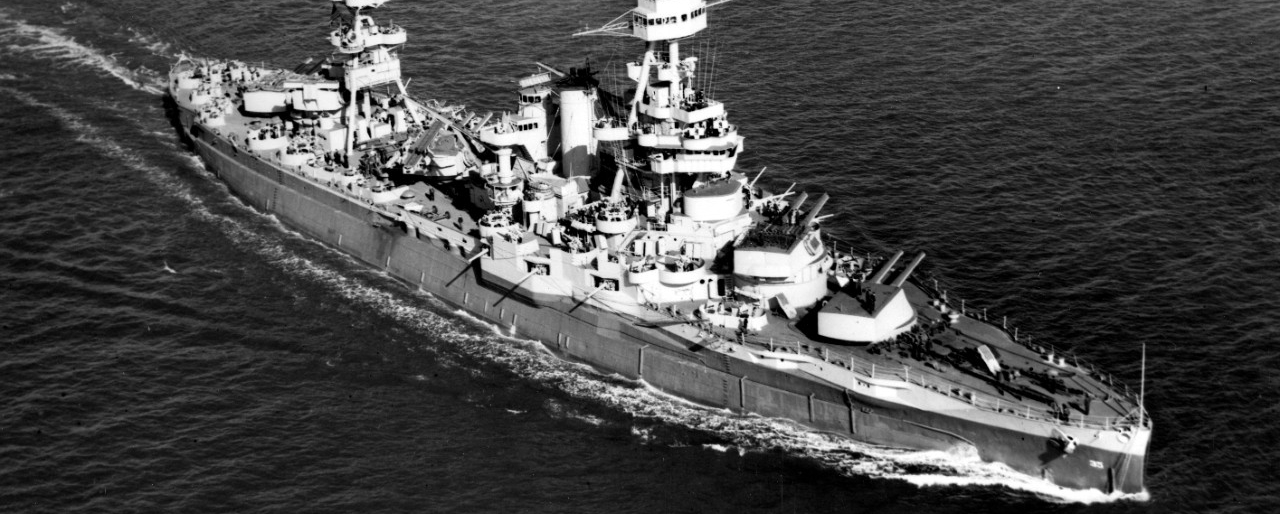USS Texas, a 27,000-ton New York class battleship built at Newport News, Virginia, was commissioned in March 1914. In May, she steamed to Vera Cruz to support the occupation of that Mexican city. Regular operations with the Atlantic Fleet began in mid-year and continued to January 1918. The battleship then crossed the ocean to join the Grand Fleet in the North Sea, where she remained to the end the First World War. Texas returned to the United States in late December 1918 and again took up her duties with the Atlantic Fleet.
Reassigned to the Pacific Fleet in mid-1919, and designated BB-35 in 1920, Texas came back to the Atlantic in 1924, when she again visited Europe on a training cruise. The ship received new oil-fired boilers and many improvements to her combat systems in a major modernization that began in 1925. With her appearance transformed, Texas' operations alternated between the Atlantic and the Pacific until 1931, when her base was shifted to California. For the next six years, she served as a fleet and division flagship during regular U.S. Fleet exercises. Texas briefly revisited the Atlantic in 1936 and was sent back to that ocean in 1937 for service that would last until late in 1944.
During 1937-39, Texas kept busy training the Navy's officers and men. When the Second World War began in September 1939, she joined other Atlantic Squadron ships in maintaining a Neutrality Patrol, an activity that became increasingly warlike when the U.S. Navy began convoying western Atlantic shiping in 1941. The next year, with the Nation now formally at war, Texas escorted troops and supplies to Panama, West Africa and the British Isles. A change in mission took place in October and November 1942, when she provided heavy gunfire support during the invasion of North Africa. Texas continued her Atlantic convoy escort duties through 1943 and beyond. In April 1944 she began preparations for the Normandy landings, which began on 6 June 1944, with Texas' 14-inch and 5-inch guns firing on German positions ashore for several days. On 25 June, she participated in a bombardment of Cherbourg, France, during which she was hit twice by enemy coastal artillery fire. Her heavy guns were again active in August, this time in the Mediterranean Sea in support of landings in Southern France.
After an overhaul, Texas went to the Pacific, arriving in the war zone in time to take part in the February 1945 Iwo Jima invasion. From late March to late May, she operated off Okinawa, firing her guns against Japanese positions and helping to fight off suicide plane attacks. Texas was preparing for the invasion of Japan when the war ended in August 1945. She left the Western Pacific in late September and spent the next three months transporting veterans home. Returning to the Atlantic coast in February 1946, Texas was inactive until April 1948, when she was placed out of commission and turned over to the State of Texas. She has been maintained as a memorial at San Jacinto ever since.



